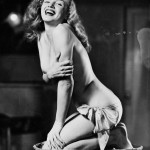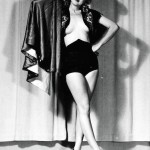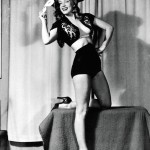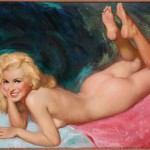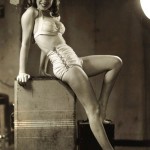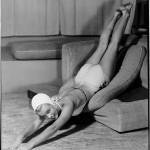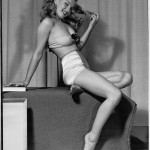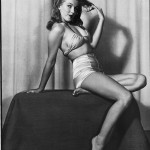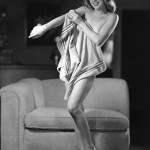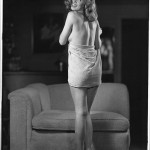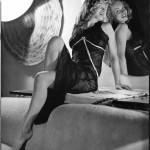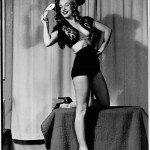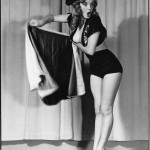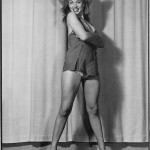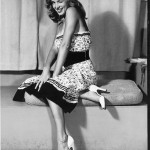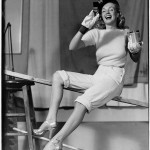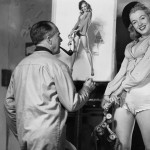ABOUT EARL MORAN
Earl Steffa Moran was born in Belle Plaine, Iowa, in December 1893. Like many of his contemporaries Moran studied at the Chicago Art Institute, while at the same time working for a large engraving house which specialized in men’s fashion illustrations. Moran studied in Chicago for two years before moving on to Manhattan where he enrolled at the Art Students League. In 1931 he moved back to Chicago and opened a small studio, specializing in photography and illustration. In 1932 he signed an exclusive contract with Brown and Bigelow and produced his first, and perhaps best known, pin-up for the company: “Golden Hours” in 1933. This pin-up proved so popular that it was used to market a variety of products, including a huge 5 pound box of chocolates. Earl Moran became one of America’s best known pin-up artists after LIFE magazine ran an article on him in 1940, he was also well known as a cover artist , along with Peter Driben etc., for Robert Harrison, and indeed painted the cover for Harrisons first issue of Beauty Parade. The early forties where also a time of some hardship for Moran, following his bitter divorce from his wife, Mura. After the divorce had been settled he moved to Hollywood and commenced painting film stars along with his calendar work for Brown and Bigelow.
Although Earl Moran utilized a variety of mediums, e.g. oil on canvas in the 40’s and oil on canvas board in the 50’s, he most commonly worked in pastels. His work can often be recognized by his heavy use of light and shadow. Earl Moran continued to paint for Brown and Bigelow well into the late fifties before deciding to retire to paint fine art subjects. He signed with Aaron Brothers Galleries and continued to paint for collectors until 1982 when his eyesight started to fail. Earl Moran died on the 17th of January in 1984, in Santa Monica, CA.
EARL MORAN AND MARILYN MONROE
One of his most famous models whilst in Hollywood was the young Marilyn Monroe, then Norma Jeane, who modeled for Moran between 1946 and 1950. Earl Moran hired Marilyn through the Blue Book Agency in Los Angeles, in 1946. This was one of Marilyn’s earliest regular modeling assignments, to help pay the rent while she fought for an entree into the movie business. She posed for him off and on for the next four years. He usually took photos of her, which he used as reference for his pinup illustrations. He paid Marilyn ten dollars an hour to photograph her in various costumes and states of toplessness from 1946 to 1949. Moran’s Marilyn work was used, among others, by major calendar company Brown & Bigelow. Forty years later, in January 1987, Playboy magazine published some of Moran’s 1946 nude photos of Marilyn. Earl Moran also did composite paintings using features or poses of several models. Some posted here are those, so you won’t always readily recognize Marilyn’s face, but it will be a pose etc. that he used of her.
One of his most famous photo’s/paintings of Marilyn was done in 1946, titled ‘Bus Stop’. It featured Marilyn in a cheesecake pose, standing next to a bus stop, with skates in her hand. The drawing was accompanied by the following poem: Little Boy Blue/Come blow your horn/She wants a ride,/This maid, forlorn/But she’s prepared/If you run out of gas./So save your tricks for some other lass.[/vc_column_text][/vc_column][/vc_row][vc_row][vc_column width=”1/1″][vc_column_text]


